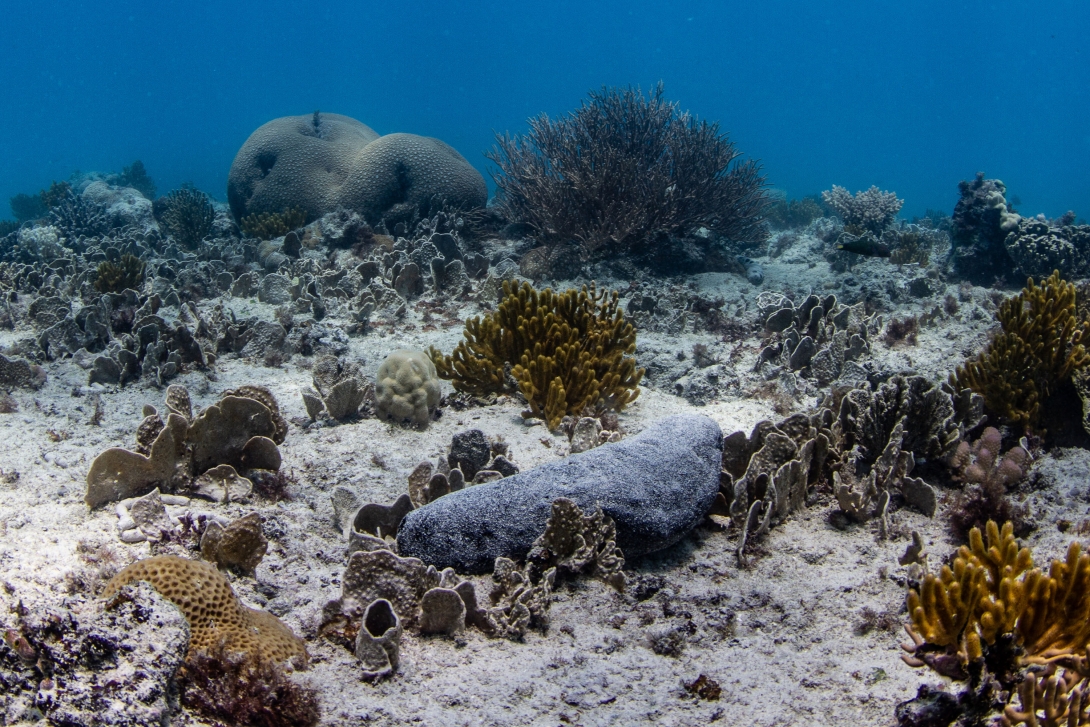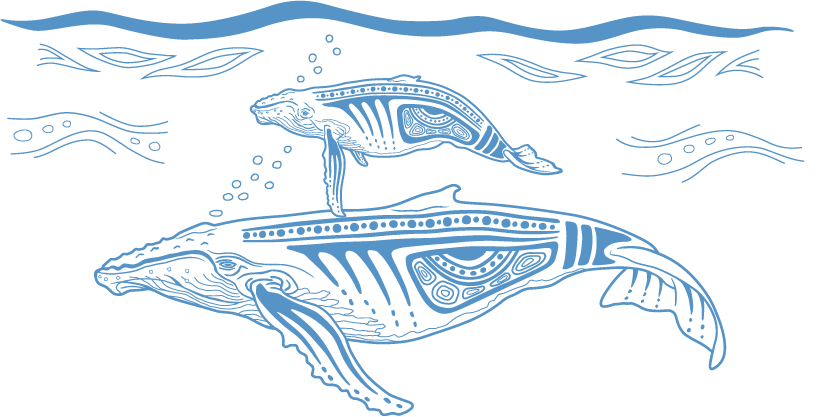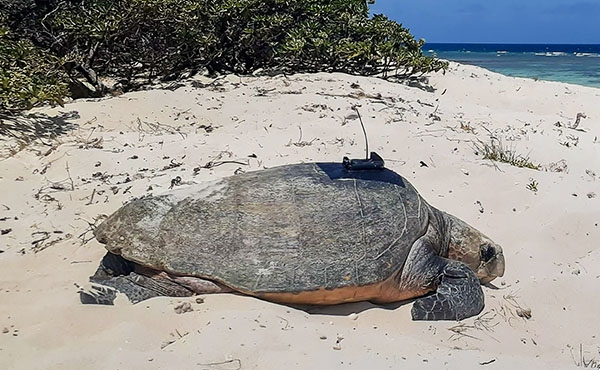Tropical sea cucumbers are harvested globally to produce the high-value product called bêche-de-mer.326 Approximately 70 species of sea cucumbers are commercially fished, although commercial value varies greatly between species.326,2071 The harvests are predominantly exported, mainly to China and other Asian nations for consumption and use in traditional Chinese medicines.326 In the Region, the black teatfish sea cucumber Holothuria whitmaei has a high commercial value in Queensland’s east coast fishery. Sea cucumbers are sedentary, and the recruitment of sea cucumber populations depends on the density of individuals at a local scale. These characteristics make teatfish vulnerable to overharvesting.
Black teatfish are vulnerable to overharvesting
In the Region, the black teatfish fishery closed in 1999 due to overharvesting causing the depletion of density and biomass of this species. On reefs north of Townsville, biomass had reduced by 75 per cent compared to estimated unfished biomass.2072 In 2019, the black teatfish fishery reopened after industry-led surveys found the population biomass had increased.2073 Due to the high value of sea cucumber and increasing pressure from domestic markets, harvest for the black market is a risk for this fishery.1287

Sea cucumber behaviour and biology have important effects on processes, such as bioturbation and bioremediation in coral reef ecosystems, inshore seagrass meadows, mangrove systems, and deeper continental habitats.2071,2074 They also contribute to deposit-feeding as a pathway for regeneration and mineralisation of surface sediments.2071 The management of this fishery considers the important ecological role of sea cucumbers in marine ecosystems.1287
Management
The Queensland Sea Cucumber Fishery (East Coast) was established in 1996, under the Fisheries Act. Currently, the commercial bêche-de-mer fishery is managed by the Queensland Department of Agriculture and Fisheries under the Queensland Sea Cucumber Fishery Harvest Strategy: 2021–2026.1287 The design of the Great Barrier Reef Marine Park Zoning Plan 2003 protects a minimum of 20 per cent of each reef bioregion from extractive activities, including those containing suitable habitat for black teatfish. The black teatfish is listed as Endangered on the International Union for Conservation of Nature Red (IUCN) List, but this species is not protected under Australian legislation.17
In the Region, the fishery is limited entry with only 18 commercial licences, which allows for individual transferable quotas for black teatfish. Effort restrictions are applied through rotational zones that limit access by restricting the number of days of permitted harvesting at each reef or group of reefs each year, distributing the catches spatially.1287 The hand-harvesting method used in the fishery is highly selective, resulting in minimal risk to non-target species.347 Recreational harvest of black teatfish is not permitted in Queensland.
Specimens being exported from Australia for commercial purposes must come from an approved commercial source, such as a fishery approved as a wildlife trade operation under the EPBC Act. Under the EPBC Act, the species can only be exported via a permit issued by the Department of Climate Change, Energy, the Environment and Water in accordance with the Convention of International Trade in Endangered Species of Wild Fauna and Flora (CITES), to which Australia is a signatory. After a positive non-detriment finding by the Department, the fishery was granted a short 12-month export approval. This prompted the first stock assessments and environmental risk assessment for the Queensland fishery.347,2075
Evidence for recovery or decline
In 2021, the latest stock assessment for black teatfish found that population biomass was 40 to 42 per cent of the unfished biomass in 1877, which is when fishing for sea cucumber in Queensland began.347 This model suggests that the biomass had steadily increased since 2001, but that this recovery was slower than expected.347 The fishery was closed between 2000 and 2019 and some evidence suggests that recovery since the closure has been more limited than the stock assessment results indicate.326,1290, 2076
Concerns remain around the accuracy of the stock assessment models because of uncertainty around biological parameters, such as age at maturity, lifespan,326 and fertilisation and recruitment success particularly at low densities.1290,2076 Current information on status or trends for the stock of black teatfish in fished and unfished reefs is also a knowledge gap.100,110,326,347


